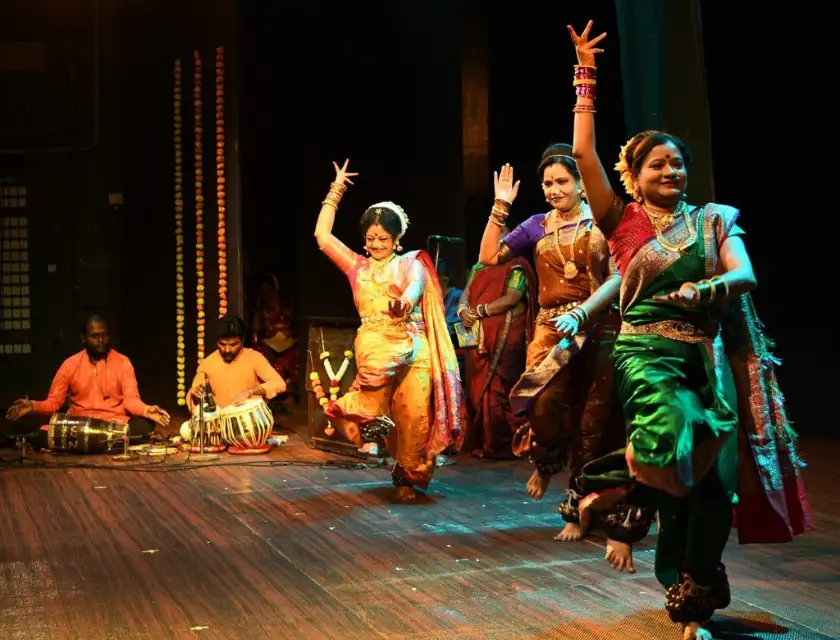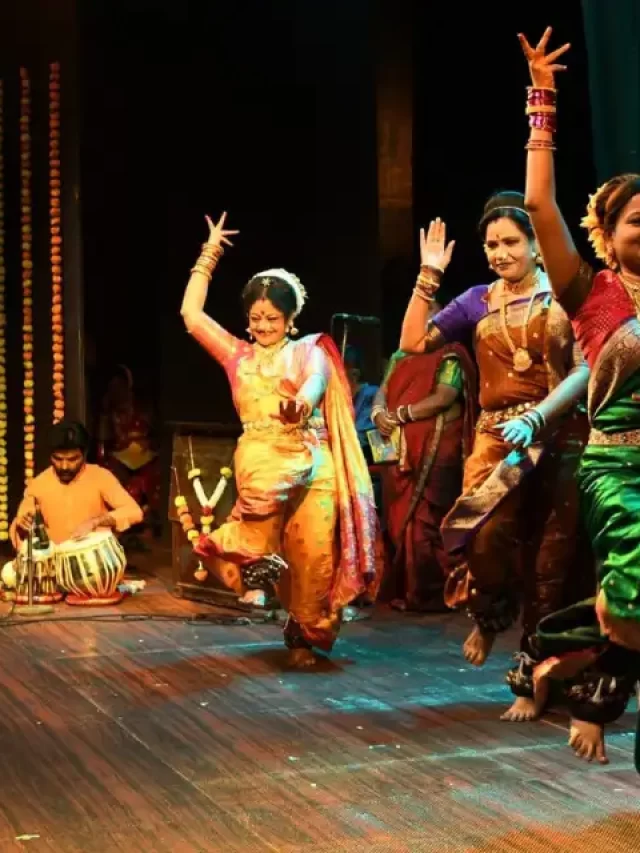Maharashtra, a state rich in history and culture, boasts a plethora of traditional art forms that reflect its vibrant heritage. From dance and music to theatrical performances, the art forms of Maharashtra provide a glimpse into the region’s diverse traditions and customs. This article delves into some of the most iconic art forms, highlighting their significance and uniqueness.
1. Jagaran and Tamasha
Jagaran and Tamasha are among the most celebrated folk performances in Maharashtra. Tamasha, a form of folk theatre, combines dance, music, and drama, often incorporating humorous and satirical elements. Jagaran, on the other hand, is a night-long vigil featuring devotional songs and narratives, typically performed during religious festivals.
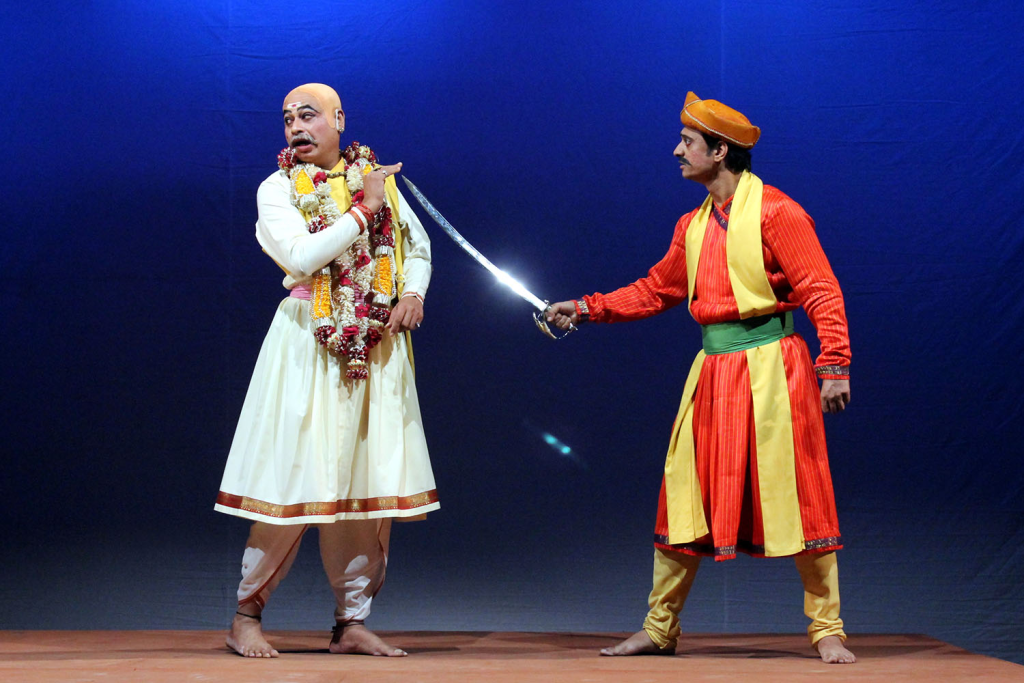
Ghasiram Kotwal Play at Bharat Bhavan, Bhopal; Suyash Dwivedi; c. 2015| Courtesy: Wikimedia Commons
2. Jalsa and Dashavatar
Jalsa is a traditional form of entertainment, often associated with rural fairs and gatherings. It involves a blend of music, dance, and storytelling. Dashavatar refers to the depiction of the ten incarnations of Lord Vishnu, performed through dramatic enactments that are both entertaining and spiritually enriching.
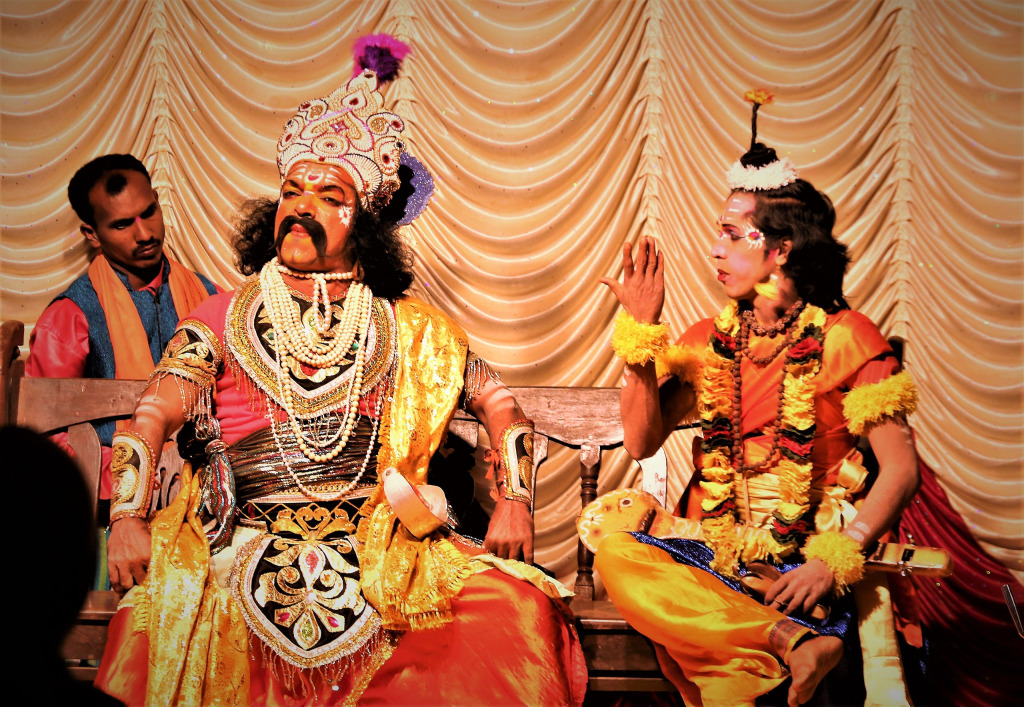
3. Akhada and Lezim
The Akhada tradition involves wrestling and physical training, reflecting the martial heritage of Maharashtra. Lezim, a traditional folk dance, is performed with small musical instruments called lezims, characterised by rhythmic movements and vibrant costumes.

4. Powada and Potraj
Powada is a genre of Marathi ballads that narrate the heroic deeds of historical figures, often accompanied by musical instruments like the Ransingh Sanai. Potraj is a unique art form involving vigorous dance movements performed by the followers of the goddess Mariaai.
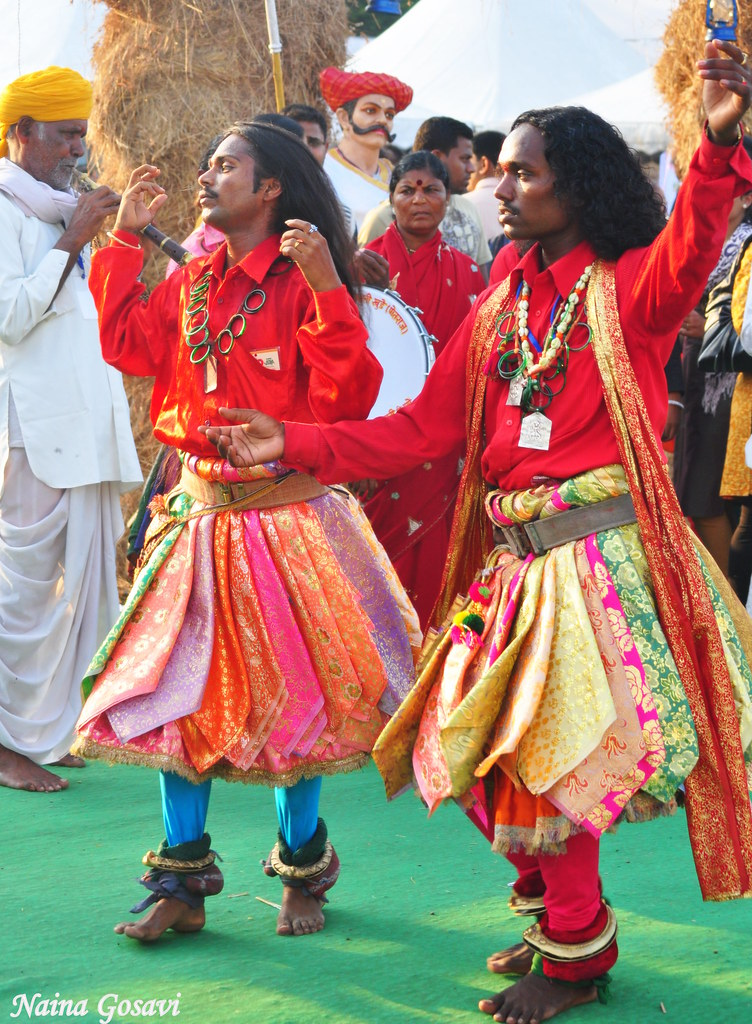
5. Gondhal and Koraku
Gondhal is a ritualistic performance dedicated to deities like Bhavani and Renuka. It involves singing, dancing, and storytelling. Koraku is another traditional dance form that showcases the rich cultural tapestry of Maharashtra’s tribal communities.

6. Khadi Gammat and Tumbdi
Khadi Gammat is a playful and entertaining folk performance involving humorous skits and songs. Tumbdi is a dance form performed by the tribes of Maharashtra, using a drum-like instrument called tumbdi.
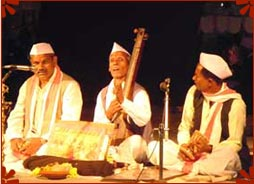
7. Waghya Murali and Chitrakathi
Waghya Murali refers to the male devotees of the god Khandoba who perform devotional dances and songs. Chitrakathi is a traditional art of storytelling through paintings, where narrators use illustrated scrolls to depict mythological tales.
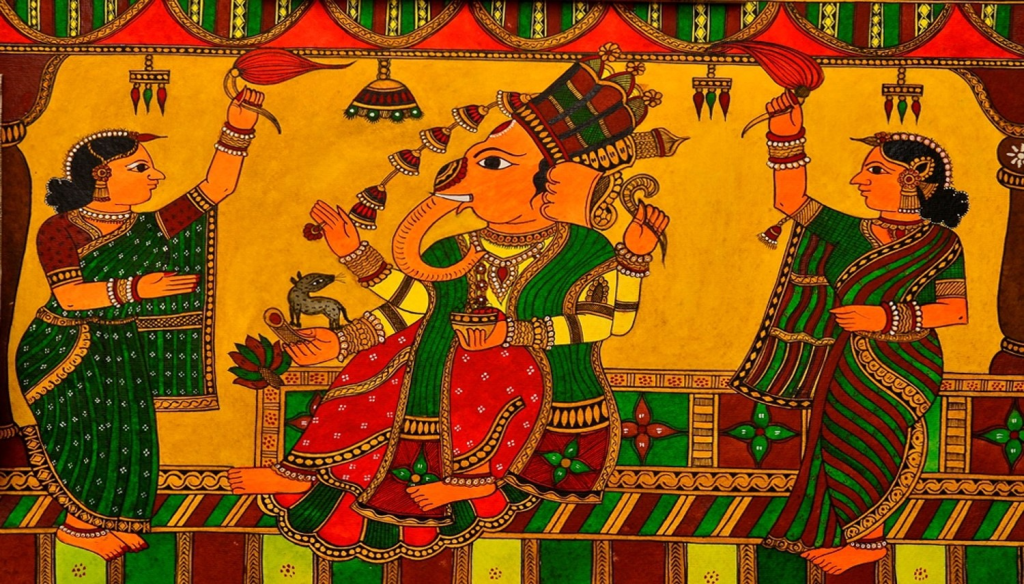
8. Dhangari Gaja and Koli Nritya
Dhangari Gaja is a dance form performed by the Dhangar community, known for its vigorous movements and rhythmic beats. Koli Nritya is the folk dance of the Koli fishermen community, characterised by lively steps and colourful attire.
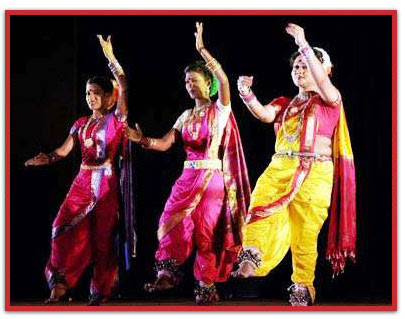
9. Vasudeo and Bahurupiya
Vasudeo is a traditional form of singing praises of Lord Krishna, often performed by wandering minstrels. Bahurupiya is a traditional art form where performers disguise themselves as various characters, showcasing their versatility and acting skills.

10. Naman Khele and Bharud
Naman Khele is a devotional performance involving songs and dances dedicated to various deities. Bharud is a form of dramatic monologue that uses allegory and symbolism to convey moral and philosophical messages.
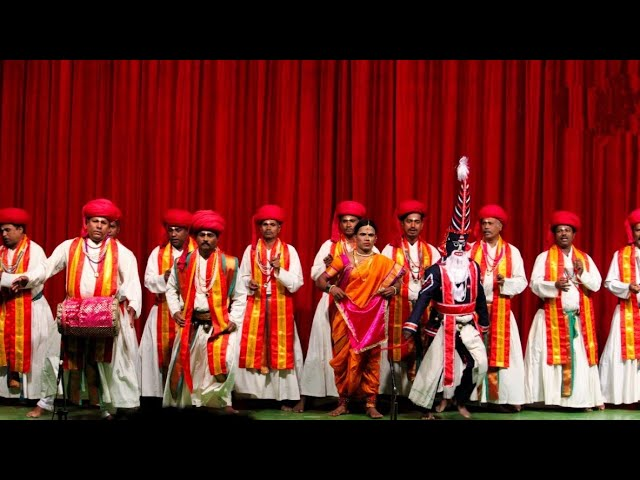
11. Songi Mukhawate and Shahiri Powada
Songi Mukhawate involves wearing elaborate masks and performing dances and skits. Shahiri Powada is a ballad form that celebrates the valour and exploits of Marathi heroes, often accompanied by the beats of the Dandhar.
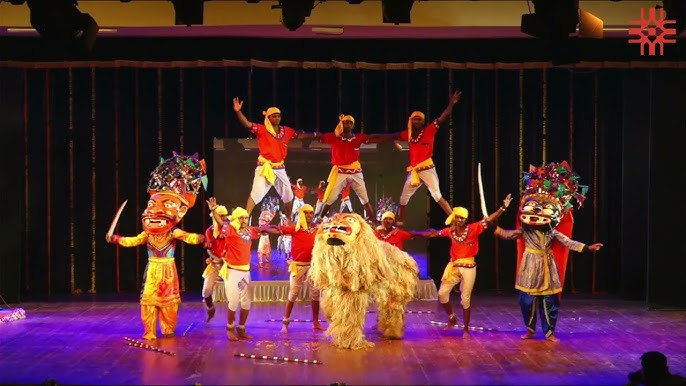
12. Pawara Nritya and Gan Gaulan
Pawara Nritya is a traditional tribal dance performed during festivals and special occasions. Gan Gaulan is a form of narrative singing that tells stories from mythology and folklore.

13. Dhangari Ovya and Bhute Aaradhe
Dhangari Ovya is a dance form performed by the shepherd community, often accompanied by songs about pastoral life. Bhute Aaradhe is a ritualistic performance involving the worship of spirits and deities.

14. Allamadevi Geet and Kokanas Dhol Nritya
Allamadevi Geet are devotional songs dedicated to the goddess Allamadevi. Kokanas Dhol Nritya is a dance form performed by the Kokani community, characterised by energetic movements and the rhythmic beats of the dhol.
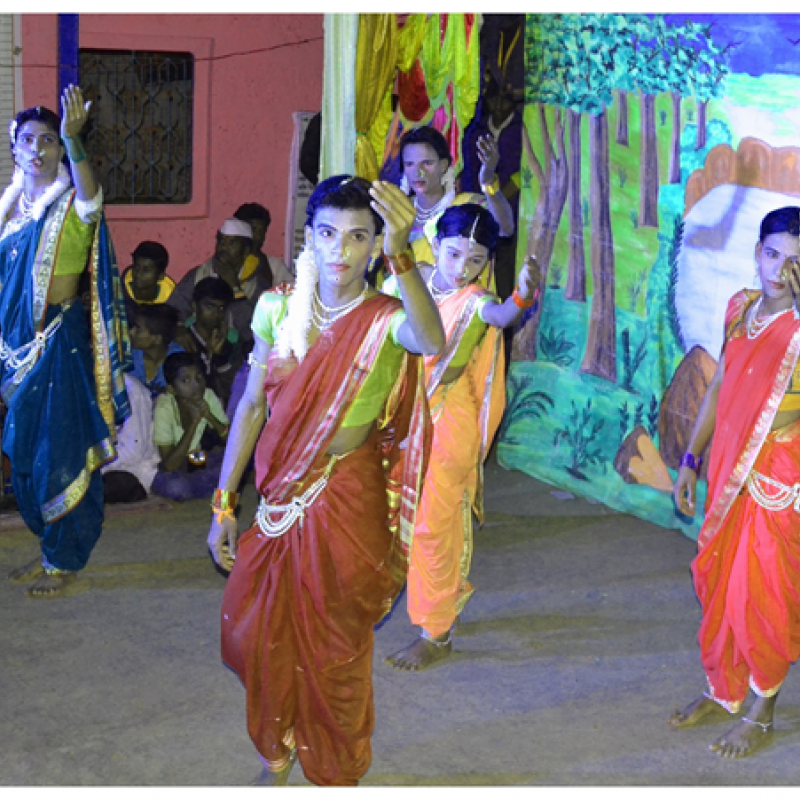
15. Kolam Dhimsa and Zadipatti Rangabhumi
Kolam Dhimsa is a tribal dance performed by the Kolam tribe, known for its graceful movements. Zadipatti Rangabhumi refers to the theater tradition of the Zadi region, showcasing local stories and folklore.
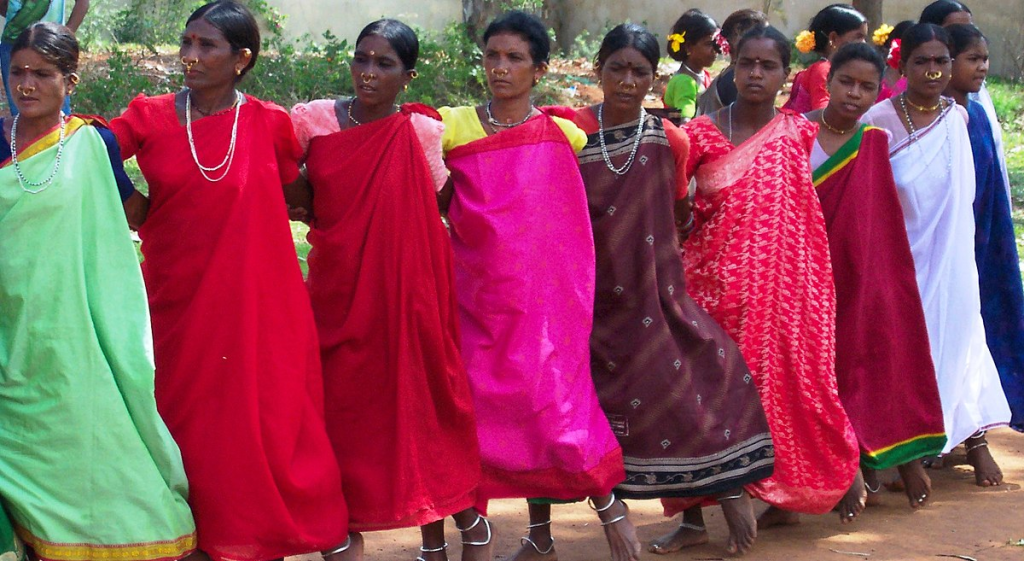
Conclusion
The art forms of Maharashtra are a testament to the region’s rich cultural heritage. From the energetic Lezim and Koli Nritya to the evocative Powada and Chitrakathi, these traditions continue to thrive, preserving the vibrant spirit of Maharashtra’s diverse communities.

